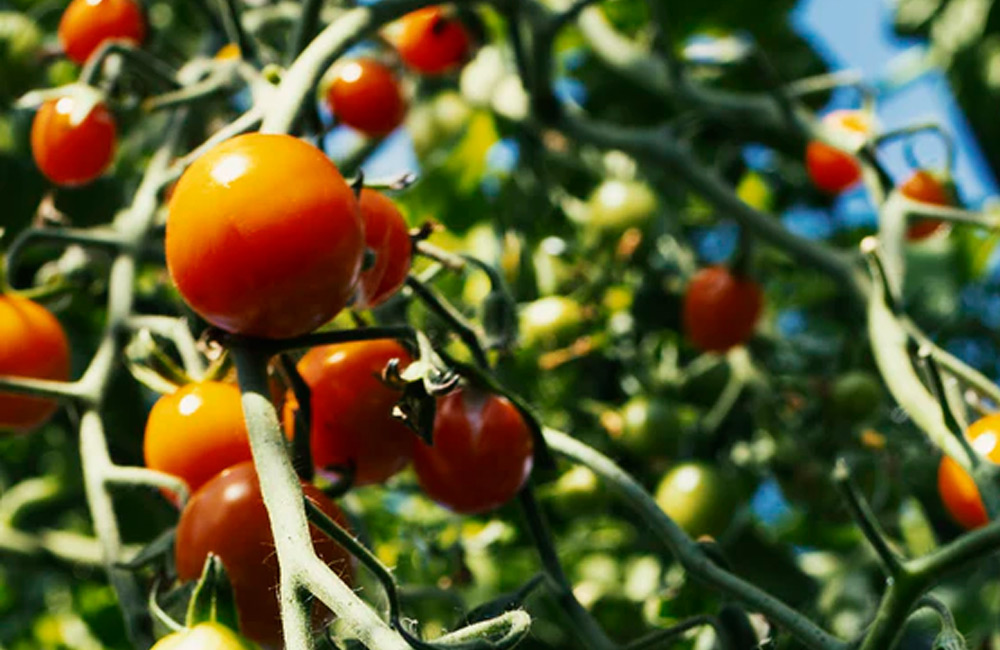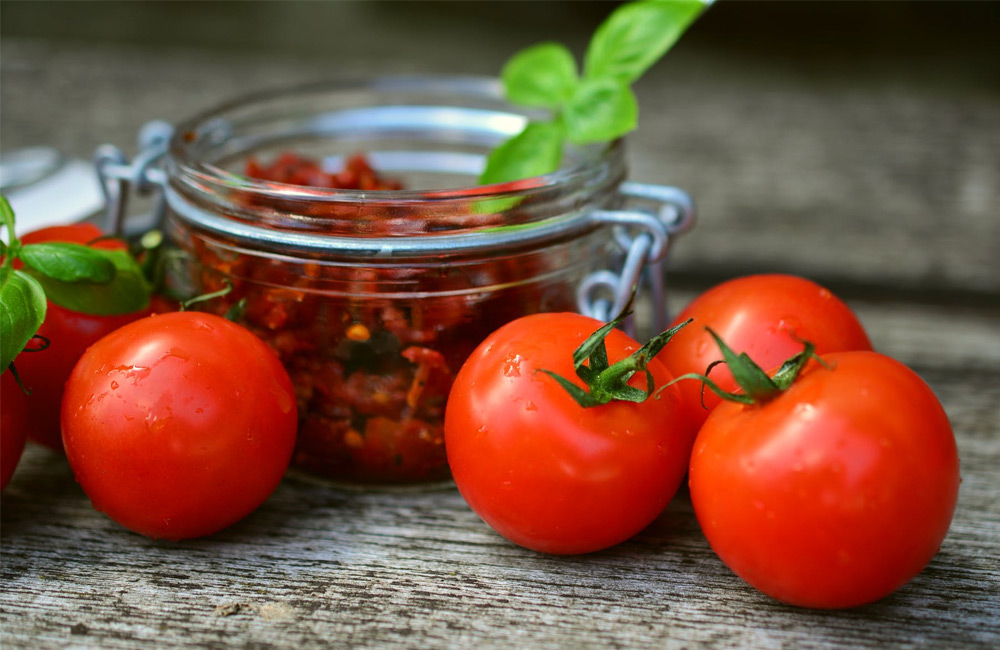How to String Tomatoes in a Greenhouse

Support Your Tomatoes
Bush tomatoes don’t need any additional support, but if you are growing cordon tomatoes, they will need some support.
Luckily, this is easy. All you’ll need is some wire, soft string, and some canes that are about 2m long. Insert a cane into the soil, about 15-20cm away from the stem. As the tomato grows, you will tie it to the cane with soft string.
Pruning Tomatoes
There are two main methods of stringing tomatoes: the French Method, and the Missouri Method.
The French Method involves getting rid of all (ALL!) other leaders and suckers, only retaining the main stem. The Missouri Method also involves pinching out the suckers, but some leaves are left on, to increase the amount of sunshine the plant gets, and to offer some shade to the tomatoes themselves.
Our recommendation is the French Method. You will get fewer tomatoes this way, but they will be bigger and healthier than if you use the Missouri Method. If you do use the Missouri Method, watch for the first sucker that develops OVER the first cluster of flowers. Allow that first sucker to grow into a second leader. Each will need its own string to climb. Leave at least 30cm between each string.
Remove Tomato Leaves
Disease often gains a hold on your plants through the lower leaves. Some diseases, like soil blight, are in the soil beneath your plant. They can’t get up into your plant on their own, but when it rains – or when you water your plants, if you’re not careful – the splash of rain can allow them to get on the lower leaves. By removing these lower leaves, you remove the easiest way for some diseases to get in and damage your plant.
Another reason to remove lower leaves, is that tomato plants fruit from the bottom up. This means that any leaves that are below the fruit, are taking energy before the fruit has a chance to take it in. Remove those leaves, and your fruit will have easier access to more of the plant’s energy.
Once those first flowers start to appear on your tomato plants, take away those lower leaves.
Stringing vs Caning/Staking
Strings can be left up not just for one year or season, but for season after season of use. They also allow you to put more tomatoes into a smaller space. Plants grown in this way can easily grow more than two metres in height, too. Getting rid of multiple leaders also allows your plants more airflow, reducing the danger of disease. Finally, string can be used for other plants too, like cucumbers and beans.
Determinate vs. indeterminate tomatoes
You should be aware of, and consider the differences between, determinate and indeterminate tomatoes in your greenhouse.
Determinate Tomatoes
Determinate tomatoes grow like shrubs. They will only grow to around 120cm high, which makes them best for enclosures with lower clearance. This type of tomato plant should not be pruned or suckered; they need the additional branches and leaves to gain the needed energy for fruit production.
The natural fruiting time of this type of tomato plant is the same as for the indeterminate varieties. They do produce their yield at the same time, and it is often abundant, so they are great for canning.
Indeterminate Tomatoes
These tomatoes can reach around 2m in height, sometimes more, and need some kind of structure, like a trellis or similar grid, to support their weight. These plants will produce fruit over a longer period of time, until at last, the frost comes and kills it off. Pruning and removing suckers will increase fruit production.
Do you have an unheated greenhouse? Learn how to grow tomatoes in it here

Best Greenhouse Tomatoes
There is a wide variety of tomatoes that are suitable for greenhouse growing, including bush varieties, but the bush varieties will take up a lot of space, side to side, so keep that in mind. The cordon varieties can be grown from floor to roof, and therefore often produce more fruit for a given volume of your greenhouse space.
Some excellent varieties of cordon tomato include:
- Ailsa craig or craigella – This has been a favourite for a long time, with excellent conventional flavour. It is an updated greenback safe assortment.
- Gardener’s delight – This is another traditional favourite.
- Capprica – This is a reliable grower with wonderful flavour.
- Ferline – This variety is similar to capprica, and a favourite for commercial growing.
- Sungold – These is a sweet-tasting, early-cropping variety.
- Dark opal – This variety is darker than most varieties, as the name indicates, these are a tasty variety that come highly recommended.
The seed provider will usually tell you (often on the package) whether the tomato is best developed in a nursery, or outside. These are general recommendations, so you can still experiment with growing nursery varieties outdoors, or vice versa, if you wish.
Commercial tomato growers can control indoor environments, including lighting, in order to produce tomatoes all year round, but even with a more modest budget and a few helpful tips, like those above, you can extend the growing season and increase the volume and quality of your home tomato crops by a considerable amount. Even without artificial heating, you could gain several weeks both before and after the normal, outdoor, growing season.
Read our full guide for growing tomatoes in a greenhouse here
 Author:
Author: